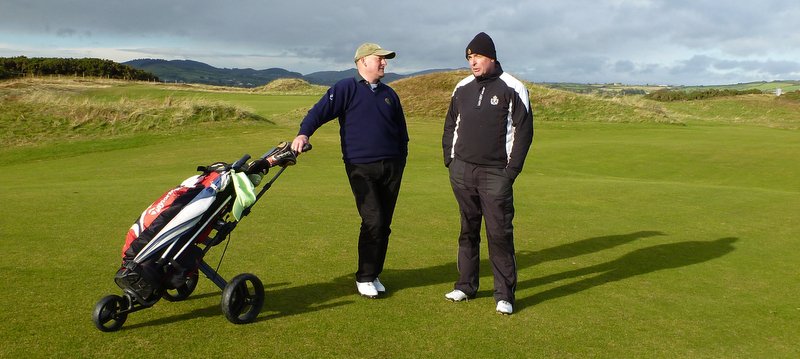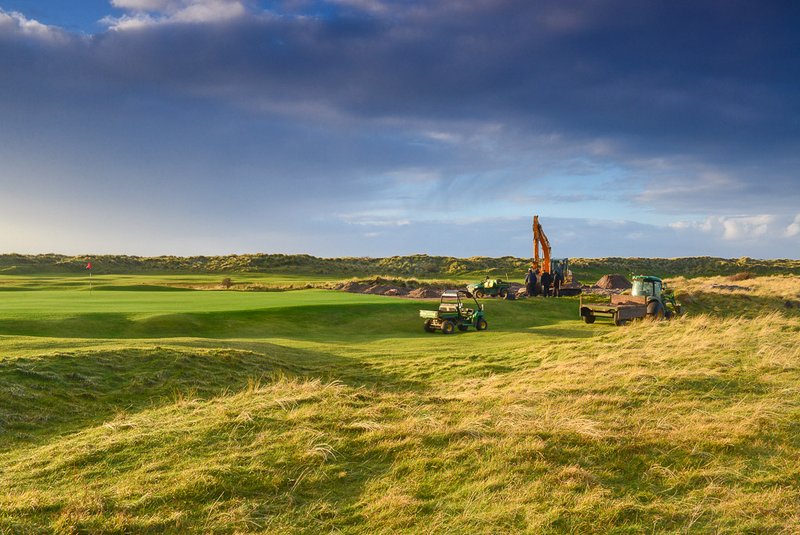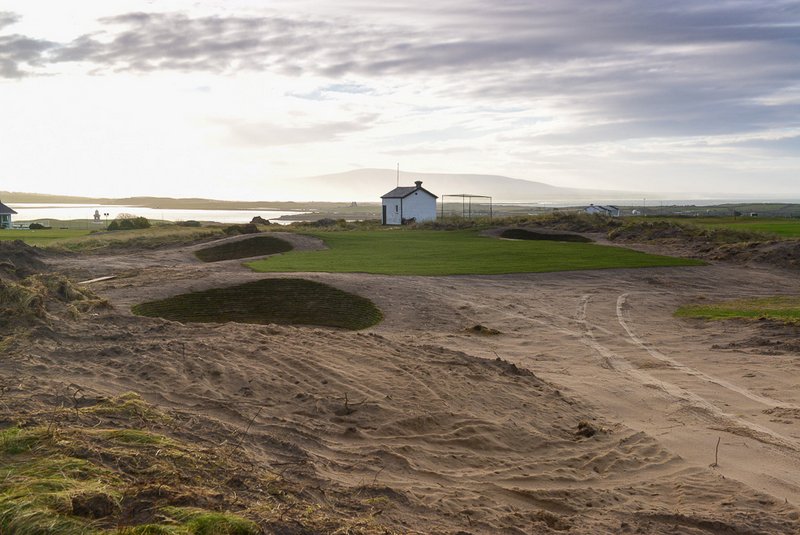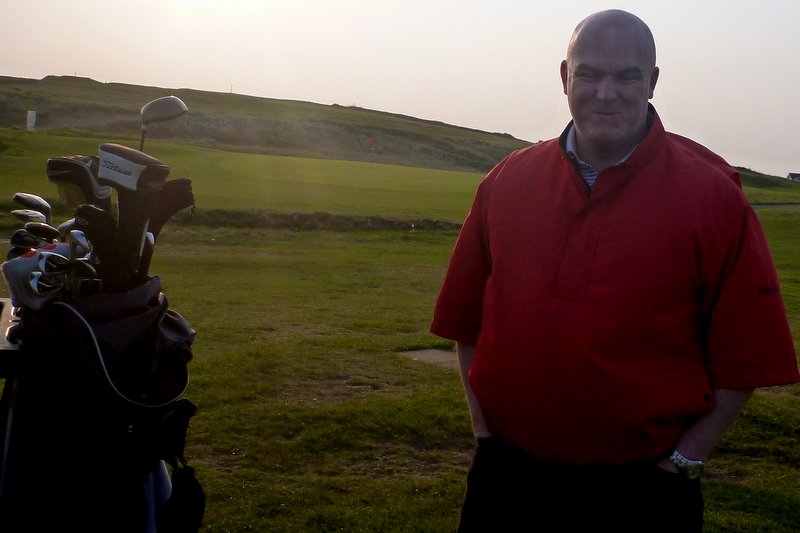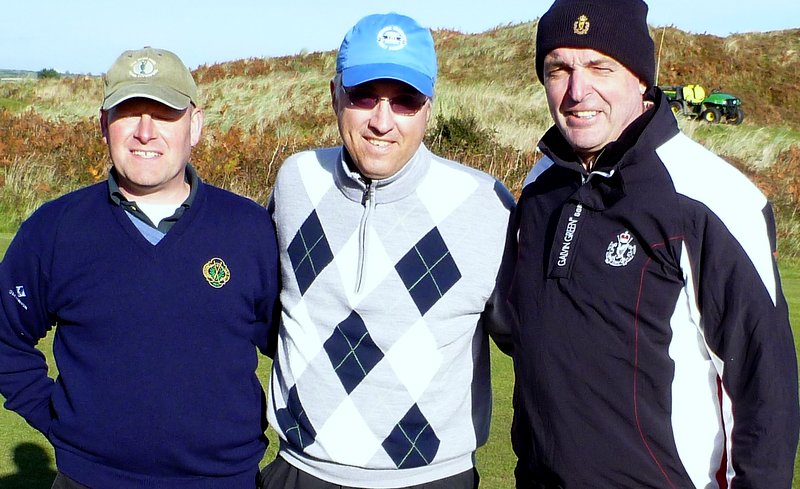
Narin & Portnoo Golf Club is situated among the dunes on a knock-you-over nub of the Atlantic Ocean called Gweebarra Bay, on the northwest coast of County Donegal. The club’s entrance is not captivating: you reach it by driving into the sort of tawdry-looking trailer park that the Irish and British seem to plant on all their choicest oceanfront real estate. But the course is tremendous. Kevin Markham, who has played every 18-hole course in the country, has described the seventh through eleventh as “maybe the best run of holes in Ireland.” The fifteenth, which measures 530 yards and plays into the prevailing wind between a line of dunes and the sea, is the hole that the ninth and tenth at Pebble Beach are trying to be. And the encampment of caravans—whose occupants, it should be said, sustain both the club and its bar—are invisible after a few holes.
On my first visit to the course, in 2011, I played with Connor Mallon, the club’s pro at the time, and set a new record for conversational tedium by saying “Wow! Great hole!” almost every time I opened my mouth other than to comment on the wind, which was intense. (Usually, when you mention wind on a links course, the natives you’re playing with dismiss whatever’s blowing as a breeze, even if you’re having trouble standing. But Mallon, good man, said he’d never known such a gale.) Later, on my way out the gate, I mentally composed an email to my wife, beginning: “Darling, how would you feel about living in a mobile home 750 miles from the Arctic Circle?”
I returned to N & P last month, with six friends from home. Between rounds, I asked a couple of older members, who were hanging around the golf shop, to explain the meaning of the symbols in the club’s logo, but they couldn’t. Eventually, someone looked it up online, and we discovered that the crest was created in 1982, at the request of the club, by a local art teacher. It is “unusual in not featuring any golfing imagery, focusing instead on the historic roots of the area,” the club’s website says. Here are the elements:
The Stonehenge-y thing at the upper left is the Kilclooney Dolmen, which stands above a 4,000-year-old tomb a few miles south of the course, near the village of Ardara (population 578):

Kilclooney Dolmen, near Ardara, Ireland.
The structure at the upper right is known as the Doon Fort, the Bawan, or O’Boyle’s Fort. It’s a circular defensive stone enclosure, and it stands on a crannóg, or artificial island, in Doon Lough, a lake a couple of miles southwest of the course. It was built in 1500 or so by the O’Boyles, who had troublesome neighbors:

O'Boyle's Fort, Doon Loch, County Donegal, Ireland.
Filling the bottom two panels is the Atlantic Ocean, which is a major presence at Narin & Portnoo. The green peak in the middle is the island of Inishkeel, which in decent weather is visible from parts of the course. The island used to have two churches, one for nuns and one for monks. Both are now ruins:

Ruined church, Inishkeel Island, County Donegal, Ireland.
And the U-shaped object in the center of the logo isn’t a horseshoe, as certain of my friends guessed. It’s the Drumboghill Gold Lunula—a Bronze Age necklace shaped like a crescent moon. It was found in a bog near the course in 1909, and is now in the collection of the National Museum. The club’s website says that its shape “matches the arc of the sixth hole.”
Connor Mallon, my host in 2011, took his life on March 14, 2012, at the age of 35. I’d been looking forward to seeing him again, and to having a rematch. At every stop on our 2012 trip, I met people who had known and loved him. In 2011, I bought a shirt from him exactly like the one he’s wearing in the picture below, because I thought that maybe its color held the secret to his golf swing.

Connor Mallon, Narin & Portnoo, near the ninth tee, May 1, 2011.



